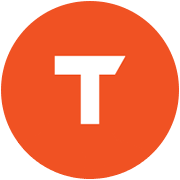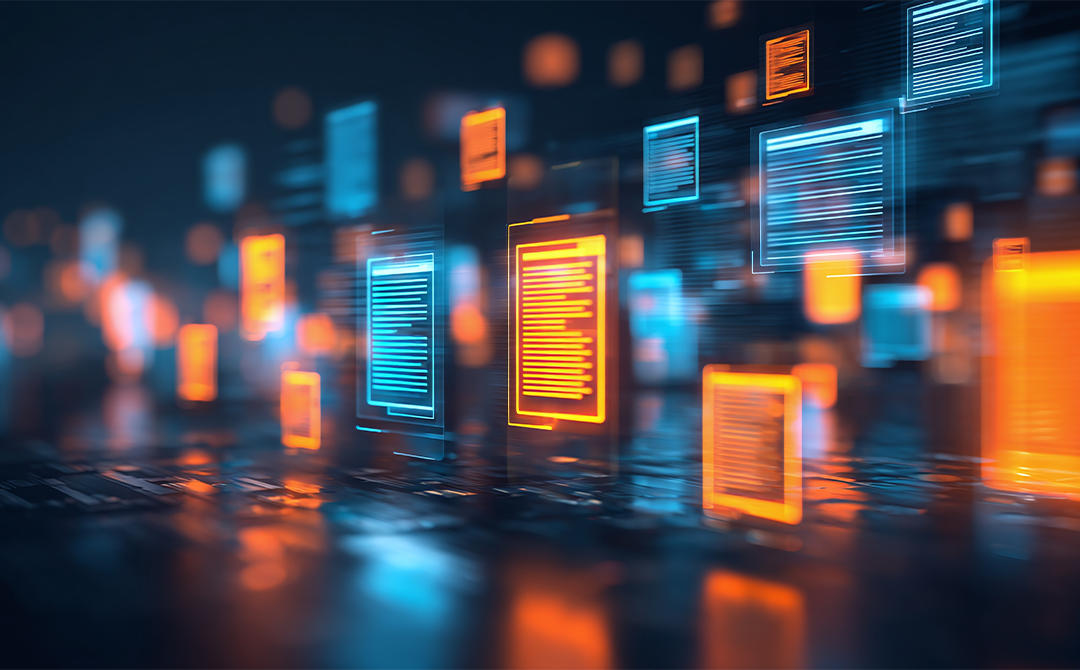
“Can AI truly understand ethics, or is it just following the rules we set?”
As exciting as it is to watch AI agents perform autonomous decision-making, the question still remains: how far do these agents act in alignment with privacy, security, and human values? That’s what data guardrails in agentic AI addresses, giving us more insights into the ethical aspects of its decision-making. Just as we wouldn’t send a driverless car into busy streets, deploying agents without robust ethical and data guardrails is a non-negotiable.
The safeguards we implement aren’t just technical checklists - they set the standards for responsible AI that build trust and protect sensitive data. Let’s look at why these guardrails matter, their business use cases, and future in promoting sustainable agentic AI deployment!
Why Do We Need Ethical & Data Guardrails In Agentic AI
The overall agentic AI market is poised to reach a valuation of $140.80 billion by 2032, from $13.81 billion as of 2025. (Source) Why? We are seeing mass adoption of this technology across multiple industries like healthcare, finance, retail, and more. It’s not just about simplifying complex and repetitive tasks, it's about deriving long-term value from the autonomous decisions the agents make. But how can we ensure their decisions are fair, ethical, and unbiased, especially in customer-facing applications?
That’s where we bring guardrails into the picture, designing and configuring a structure AI needs to act safely, reliably, and within its operational scope. Let’s take a quick look at why we need ethical and data guardrails in agentic AI:
Safety and compliance - It’s no secret that even AI has its own set of compliance standards organizations should adhere to. For instance, regulations like the GDPR, HIPAA, and EU AI Act govern the transparency and fairness requirements in its decision-making, bringing guardrails to guarantee adherence to the terms of those regulations. And safety goes hand-in-hand with these compliance standards, restricting unauthorized access to sensitive data and recording decision logs.
Bias detection and prevention - AI models can inadvertently amplify biases in their training data, generating outputs/decisions that may be unfair or discriminatory. Guardrails focus on mitigating such outputs, keeping an eye out for biased trends or responses and automatically rectifying or alerting users of them.
Building trust - When it comes to AI’s adoption and acceptance, trust is key. And the foundation for that lies in three pillars: Transparency, accountability, and alignment with human values. This is where responsible AI deployment comes into play, integrating guardrails that enhance explainability of AI decisions and prevent unethical outcomes.
Protecting brand reputation - One operational misstep can potentially damage your company’s reputation big time. From breach of customer trust to lost revenue, your AI system is practically a liability if not trained with accurate and fair data sets. Remember, goodwill is classified as a long-term asset and to sustain that, ethical and data guardrails in agentic AI are needed to validate its outputs for appropriateness and regulatory compliance. These guardrails not only help maintain brand consistency, but also safeguard your public image.
Types of Guardrails for Autonomous AI Systems
Though autonomous AI systems add efficiency and convenience to your workflows, there are complexities your team still has to navigate, from training of data to final decision output. AI agent guardrails are not just a singular concept as it comes in diverse types:
Business Use Cases for Guardrail-Enforced Agentic AI
Guardrail-enforced agentic AI systems have various applications that span and benefit multiple industries, namely:
Healthcare - AI systems that recommend treatments must adhere to ethical guidelines and patient privacy regulations. In this case, guardrails prevent these systems from offering direct medical diagnoses or treatment advice because if inaccurate, they could lead to health hazards. They also ensure sensitive information like patient or staff records remain private, preventing potential breaches and treatment disruptions.
Finance - Timing and accuracy is everything in the finance sector. It also involves constant tracking, rules, and reviews, which is why autonomous AI guardrails are essential to ensure compliance with stringent regulations and protect confidential information. An example includes autonomous trading bots requiring guardrails to prevent market manipulation. And in fraud detection, AI agents are constrained to avoid biased advice, maintaining detailed audit trails for transparency.
Customer support - AI is being used extensively in this area, where 84% of executives use it to interact with their customers. (Source) Untrained or unchecked AI systems can contribute to skewed responses when interacting with customers. Guardrails are enforced here to ensure the agents operate within predefined ethical and brand guidelines. For example, AI chatbots are instructed to not generate biased responses, disclose sensitive data without escalation, and make binding promises like refunds to customers.
Manufacturing - In this sector, guardrails for autonomous AI agents manage key production processes like predictive maintenance, equipment control, and process optimization. They also limit AI actions to comply with safety regulations, preventing incorrect commands from causing downtimes or hardware damages. For example, autonomous robots installed in production lines operate under strict guardrails and safety protocols, protecting assets and workers from physical harm.
Travel and hospitality - AI agent guardrails are quite instrumental even in the travel and hospitality sector, featuring a wide range of applications from personalized recommendations to actual travel/hotel bookings. For example, an AI trip planner might be restricted from booking flights outside a user’s budget or suggesting activities that aren’t family-friendly. Guardrails can directly improve customer experiences too, by aligning recommendations with their preferences and regional conditions.
Tools & Technologies That Enable Guardrails
Here are some of the technologies that enable guardrails for large language models and AI agents. These guardrails cover several domains and feature their own list of tools that contribute to responsible AI practices.
|
Category |
Tools and technologies |
|
Security and privacy |
Content filters, prompt injection shield, sensitive content scanner |
|
Language clarity |
Readability analyzer, translation accuracy checker, response validity grader |
|
Response and relevance |
Prompt address validator, URL availability checker, Fact-checker |
|
Content validation |
Price quote validator, Source context checker, content quality checkers |
|
Logic and functionality |
OpenAPI response validator, JSON format validator, SQL query validator |
There are several other open source projects that enable guardrails to tackle security challenges in organizations. Some of them include Purple Llama, Granica, Eden AI, Rebuff, and NVIDIA FLARE (Federated Learning Application Runtime Environment).
Additionally, Tredence’s 4-pronged approach for agentic AI also establishes the framework to set up guardrails more effectively. From establishing AI-native data foundations to embedding responsible AI governance, we help you lead the shift to achieving advanced decision-intelligence within your enterprise's AI stack.
Future Of Agentic AI With Ethical & Data Guardrails In Tow
Can you imagine a future where agentic AI systems operate independently with zero human supervision? Being an up-and-coming technology right now, not every output generated is free of inaccuracies or biases, which means humans have to step in to refine inputs and continuously monitor the process. But we are fast-approaching a future where humans would not even be in the picture.
According to a Gartner report, at least 15% of day-to-day work decisions will be made autonomously through AI agents by 2028, up from 0% in 2024. Additionally, 33% of enterprise software applications will embed this technology by the same projected year, up from 1% in 2024. (Source)
We are entering a phase where these systems operate with a high degree of autonomy - learning, adapting, and adjusting strategies in real-time as they receive feedback or new information. This contrasts with traditional AI systems that need constant human input and operate under predefined workflows.
As agentic AI models evolve over time, strict guardrails are needed to ensure its processes and decisions are efficient, unbiased, and highly secure. This way, human agents don’t have to be constantly involved and can focus on other core operational areas that need their attention. That said, the future of AI’s autonomous decision-making is set to be transformed by the following guardrail implementation strategies:
Prompt engineering
This ongoing and iterative process entails crafting clear input prompts or instructions to guide AI models towards desirable and contextual-relevant outputs. The prompting process
- Carefully designing examples to reduce stereotypes
- Using a neutral language
- Testing prompts frequently for vulnerabilities
- Applying advanced filters wherever necessary to avoid biased language or hate speech
Customizable ethical frameworks
Legal laws and industry regulations centered around AI may often change as the technology keeps advancing. But with customized ethical frameworks, organizations can define and update ethical rules that align with their values and changing regulatory requirements. A few key frameworks include:
- Flexible rule sets (classifier-based or static) that can be tailored easily
- Hierarchical policies that prioritizes rules to resolve conflicts and adapt to evolving norms
- Policies that govern both user inputs and model outputs
Human-in-the-loop (HITL)
This principle incorporates human intervention and oversight for critical or ambiguous decisions. Humans will be involved when:
- The AI’s output has significant ethical, legal, and financial implications
- The decisions made impact the lives or reputation of certain individuals
- Nuanced judgement or domain expertise is required to assess outputs for accuracy and appropriateness
So when humans are involved in AI’s decision-making process, they block high-stakes outputs pending for review, providing continuous feedback to assess bias or correct errors.
Bias and hallucination detection
Bias and hallucination detection uses several metrics to ensure AI outputs are trustworthy and free of bias:
- Fairness metrics - They measure if model outcomes are fair across different groups. A few common metrics include demographic parity, equal opportunity, and disparate impact.
- Counterfactual testing - They check if sensitive attributes like gender or race influence model predictions.
- Adversarial testing - Exposes model weaknesses, edge-case failures, or biases using synthetic data or crafted queries.
- Automated/manual fact-checking - Compares outputs against trusted sources online to identify and filter inaccurate facts.
Google’s What-If tool, IBM AI Fairness 360, and Microsoft Fairlearn are prominent AI bias detection tools.
Reinforcement Learning from Human Feedback (RLHF)
RLHF is emerging as a key strategy in shaping the credibility of autonomous agents and their safety mechanisms. It trains models with direct human judgements to ensure safety and relevance in outputs. Human feedback given is typically in the form of preference rankings or corrections to adjust the model and help it learn from complex cases that can help reduce biased outputs. Combine it with data guardrails in agentic AI and you get a dual approach; shaping model behavior during training that also enforces strict policies during deployment.
Final thoughts
As organizations realize the transformative potential of agentic AI, the need for robust ethical and data guardrails cannot be overstated. Not every AI model is built intelligently, raising concerns about trust, transparency, and accountability in the decisions made and outputs generated. And as these models become more autonomous with constant innovation, you may have the added pressure of aligning their outputs with your values along with regulatory standards. This is where Tredence steps in to assist you as your ideal AI consulting partner.
With our expertise in ethical AI integration and industry compliance standards, we offer tailored strategies and governance frameworks to help you develop and scale AI agents with confidence. There has to be a sound balance between innovation and ethics, both of which we help you achieve when setting up data guardrails. Partner with us today to know more!
FAQs
1] Can data guardrails prevent hallucinations in large language models?
Data guardrails don’t entirely prevent hallucinations in LLMs. But they enforce strict response guidelines, validate outputs against trust sources, and develop contextual grounding, significantly reducing hallucinations.
2] What governance frameworks exist for managing AI agent behavior?
Common governance frameworks include risk-based regulatory models, human-in-the-loop oversight, transparency mechanisms, and continuous monitoring for managing AI agent behavior. Regulatory bodies governing these frameworks include EU AI Act, ISO/IEC 42001, and IEEE P3833 Standard.
3] What are guardrails for autonomous AI agents?
Simply put, guardrails act as safety mechanisms that ensure AI agents operate within defined security, legal, and organizational standards. Such mechanisms include ethical boundaries, content filters, and privacy protections.
4] Can guardrails limit the creativity or autonomy of AI agents?
To some extent, guardrails can limit the creativity or autonomy of AI agents through ethical and safety boundaries imposed. However, they are designed to balance innovation and safety without compromising too much on creativity and its autonomous capabilities.

AUTHOR - FOLLOW
Editorial Team
Tredence
Next Topic
Enhancing Healthcare Supply Chain Data Quality: A 3-Phase Approach to Building Trust and Wellbeing
Next Topic




